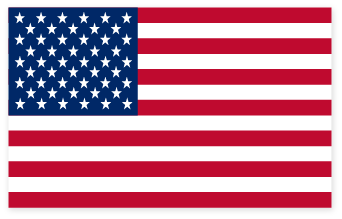It is forbidden to hang up wet towels on Shabbat. If it just wet from washing your hands then it is still an issue of Marit Ayin to hang them on clothesline.
Explanation:
The Gemara in Eiruvin 100a: With regard to roots of a tree that are three handbreadths above the ground, or if there is a hollow space beneath them of three handbreadths, although on one side of the tree the roots are level with the ground, one may not sit on them because of the following rule: One may not climb a tree, nor may one hang from a tree by one’s hands, nor may one even lean against a tree on Shabbat.
What does the Gemara mean ‘to hang stuff on a tree’?
The Piskei HaRid and Ritva say we are talking about someone who is leaning to his side and the tree is supporting his back. The Meiri understood that it means he is hanging of the tree branch. Rashi seems to say that as well.
The Gemara lists three prohibitions of using a tree. 1) climbing the tree. 2)hanging on the tree 3) leaning on the tree. So rules the Shulchan Aruch ( Orach Chaim 336:1) :
The Mishna Berura adds tis decree maybe he will climb up and pull off leaves or branches or fruit on purpose and be obligated in Korban Chatat.
These are the halachot of touching the trees but the Shulchan Aruch adds that even hanging stuff on a tree is a problem so too taking stuff off the tree.
The Gemara in Shabbat 155a say that using a tree indirectly, “And the halacha is that using the sides)of the tree) is forbidden but using the sides of the sides is permitted.
The sides of the tree are the nails banged into the tree or the ropes tied to it, it is forbidden to use the nail or rope to hand things on them on Shabbat, like clothing etc. However, if you tie a string to a nail banged into the tree then the nail is a ‘side’ of a tree and the string is a ”sides of the sides”
which is permitted to use. So rules the Shulchan Aruch (Orach Chaim 336:13) : It is forbidden to use the ‘sides’ of the tree but the ‘sides of the sides’ is permitted. Therefore it is forbidden to lean a ladder on the side of the tree because when he climbs up he is using the sides of the tree. If there is a peg stuck in the side of the tree is permitted to lean the ladder on that since the peg is the side of the tree and the ladder the sides of the side. If you stick in peg and hang a basket on it, the peg is the side and the basket the sides of the sides.
It is clear from the Shulchan Aruch one who leans a ladder on a tree on Erev Shabbat, it’s forbidden to climb up the ladder on Shabbat. That is, even though the rungs of the ladder aren’t touching the tree only the sides of the ladder are touching. We don’t say the sides of the ladder are like the sides of the tree and the rungs are the sides of the sides. The Sha’r Hatziyun (305:60) explains reason is that the ladder is all considered one object.
In our case in order to hang towels on the line and take them down if it is strung from tree to tree you must screw a nail or hook in the tree and then tie the string to the hooks. In this way you may hang stuff on the string since it is considered the ‘sides of the sides of the tree’.
There is another issue though, that you are not allowed to hang towels on a string to dry on Shabbat.
The Mishna Shabbat 146b writes: One who whose clothing got wet on the way home, may walk on them and don’t have to worry about squeezing, when he gets to the yard he can spread them out in the sun but is not allowed to hang them of everyone to see.
The Gemara adds:
What comes out of the Gemara is that wet clothing is forbidden to spread out to dry where people might see. Where no one can see the Tannaim disagree. The Shulchan Aruch (Orach Chaim 301:45) rules:
Therefore, it is forbidden to hang them where other people can see, and it is forbidden to hang on clotheslines even where no one can see.
The Poskim discuss what is called ‘wet’ clothing, how wet do they have to be? The Magen Avraham says only if they got soaked with water they are forbidden to hang, but if they just got a bit wet you may hang them over a sting, since no one will think you washed them. The Shaar Hatziyun though brings may poskim who argue that there is no difference between a little water and a lot. It is in either case forbidden to hang the clothing on a line.
R’ Shlomo Zalmen Auerbach sys that even dry clothing or towels are forbidden to hang on a clothesline since anyone who sees them can’t see if the clothing or towels are very wet or dry, and people will think he washed them.
R’ Moshe Feinstein (Igrot Moshe Orach Chaim 5:18) things which are generally not washed if they got wet he nay hang them because no one will think they washed them.
So in our case hand towels would be forbidden to hang up on a line so it is better to hang them a chair.



